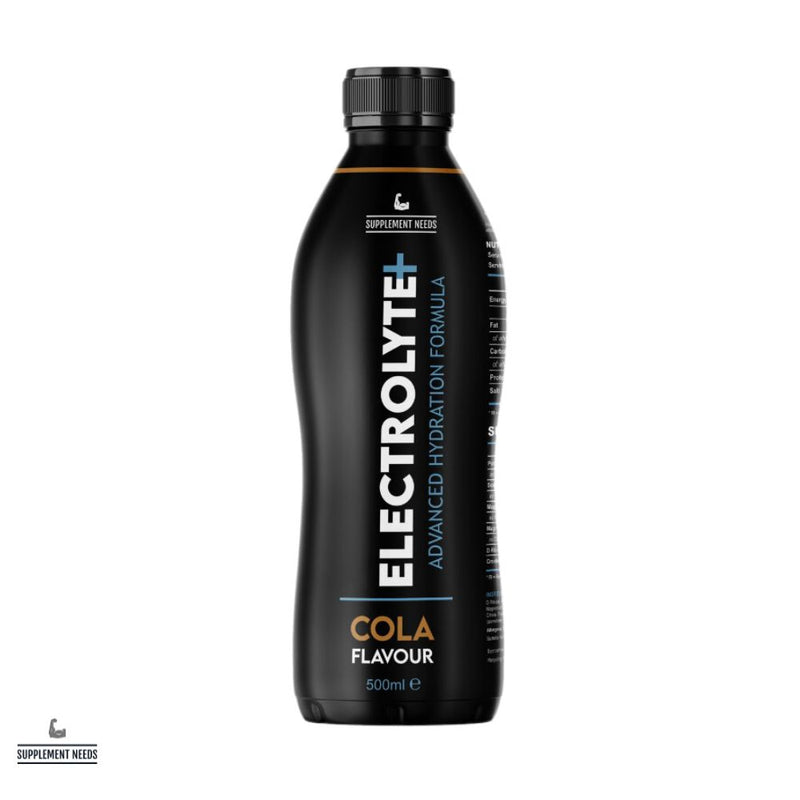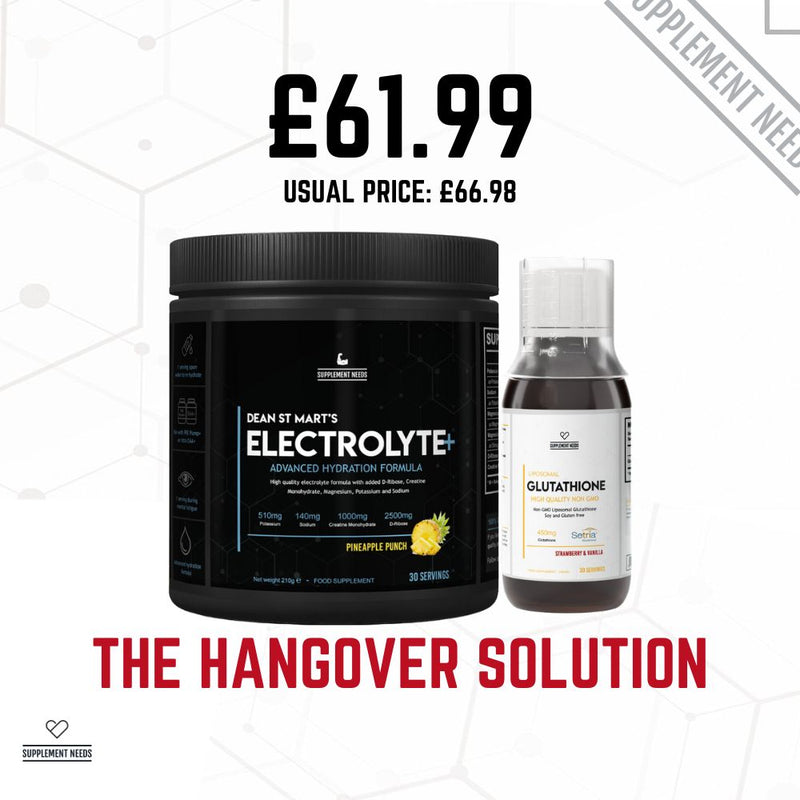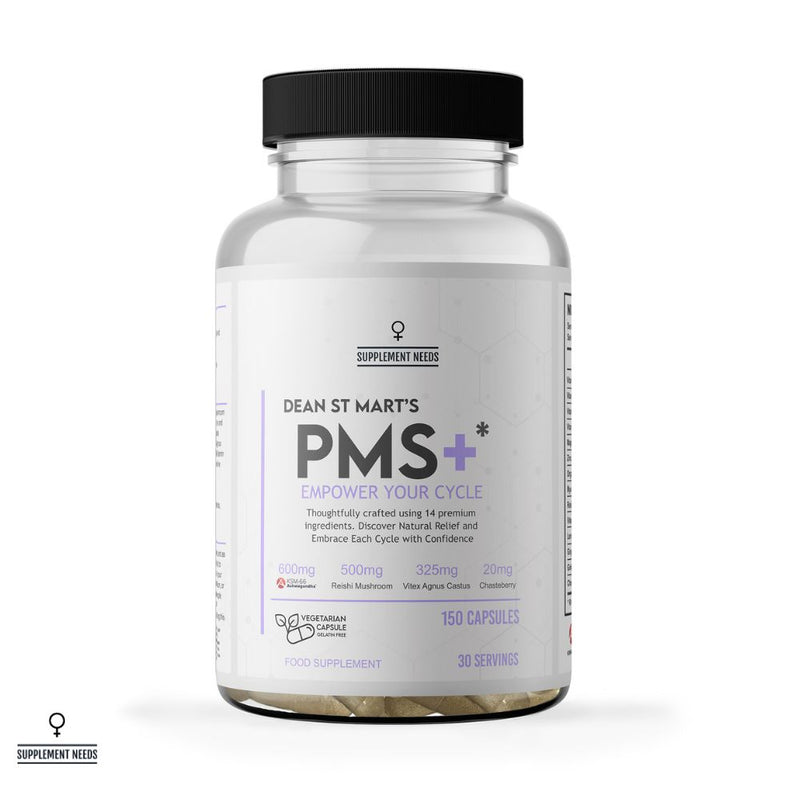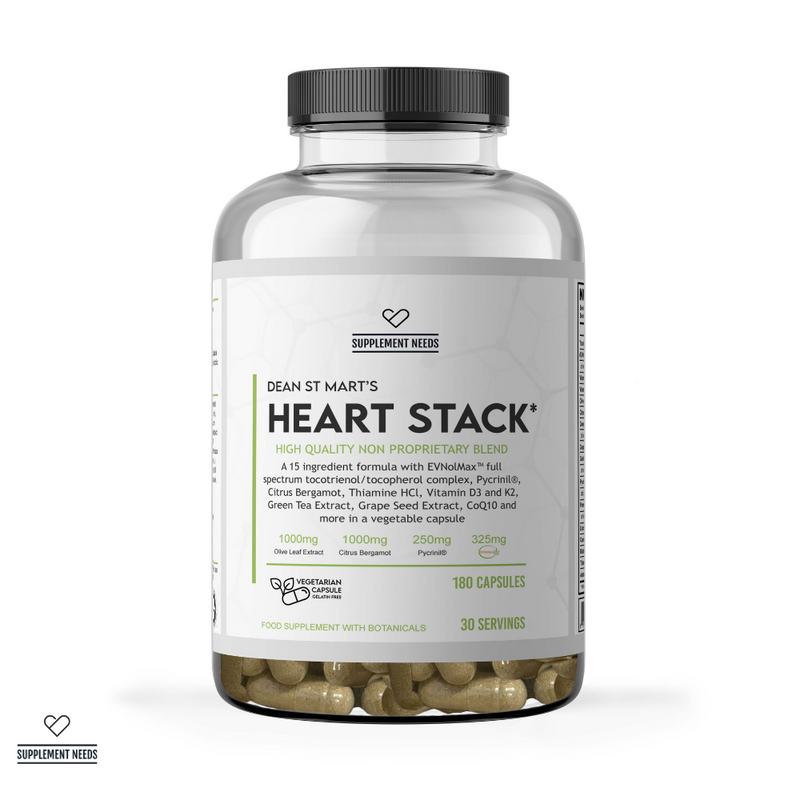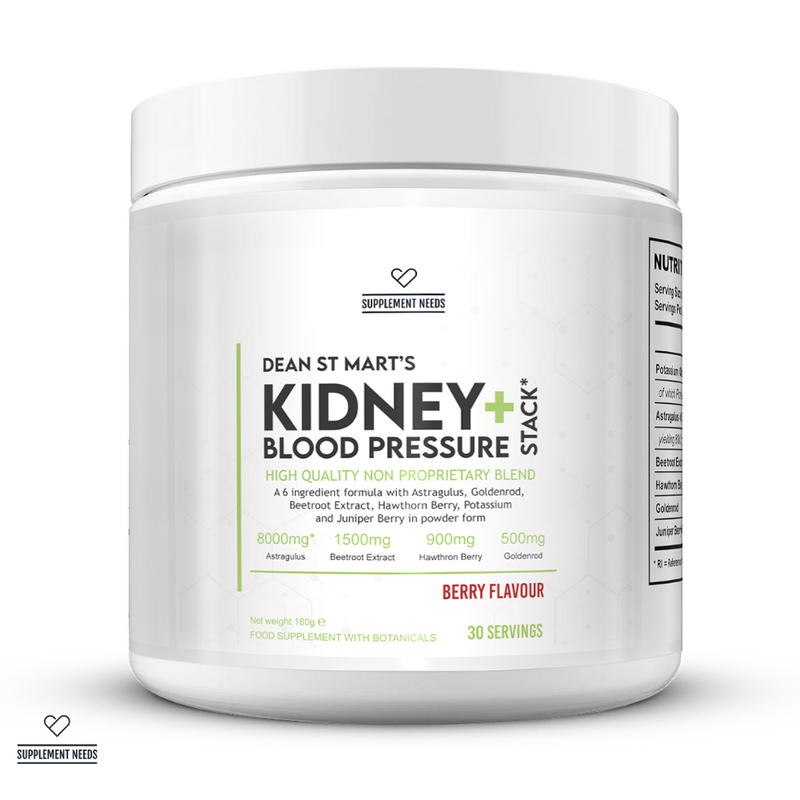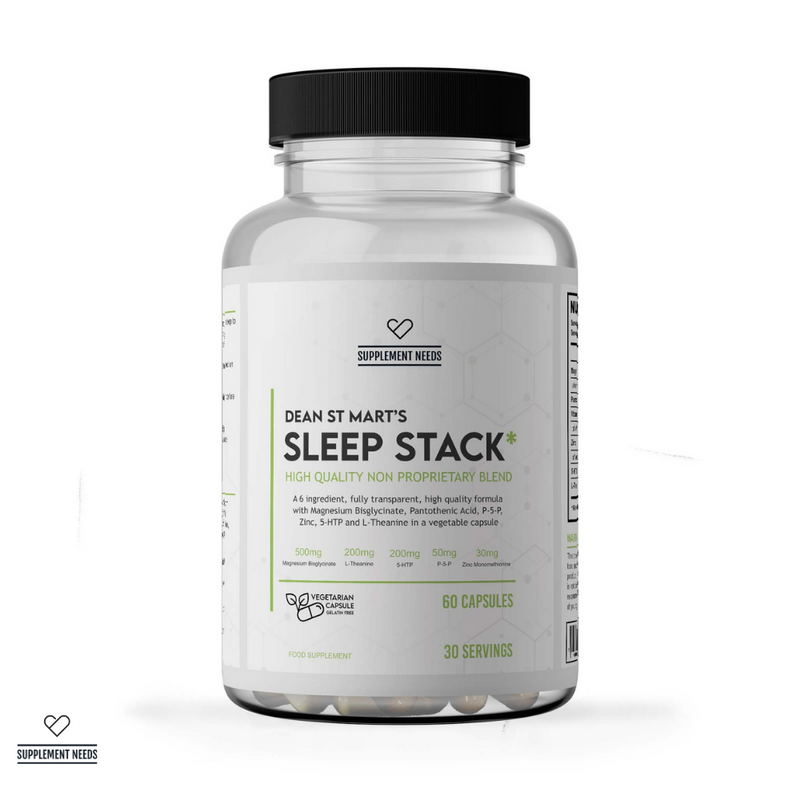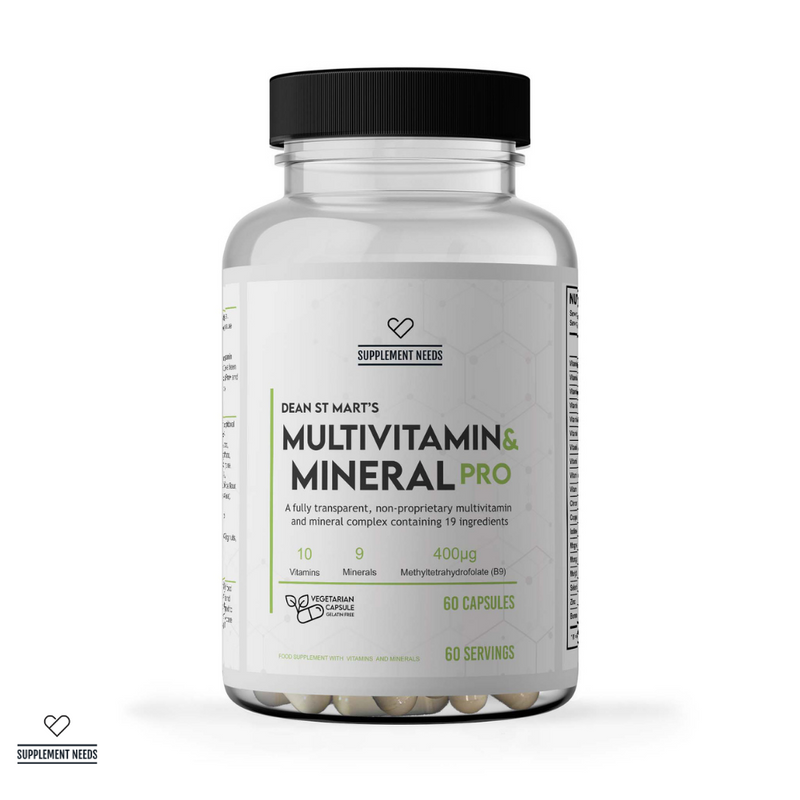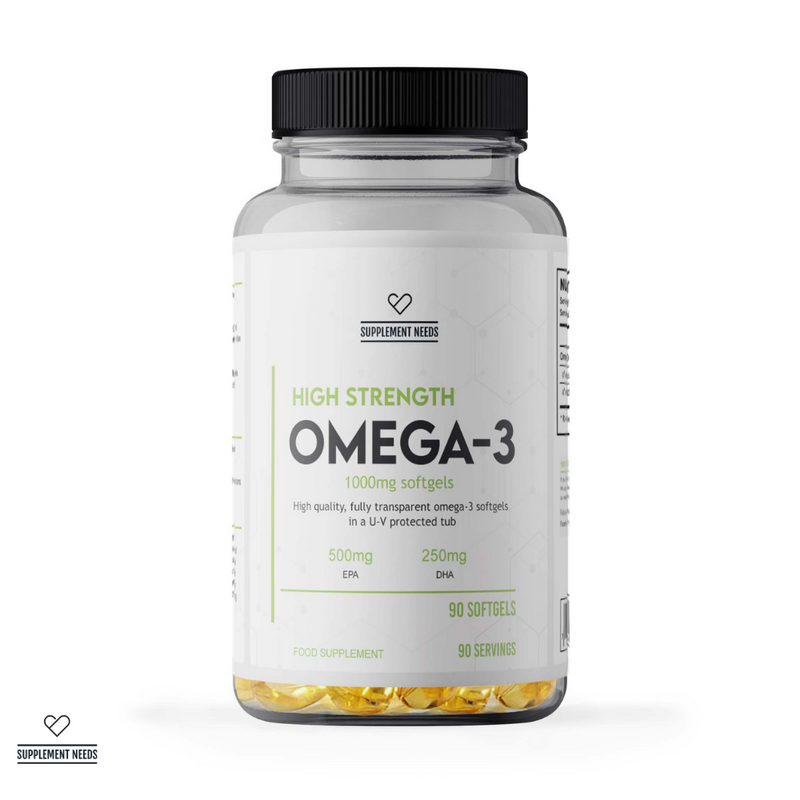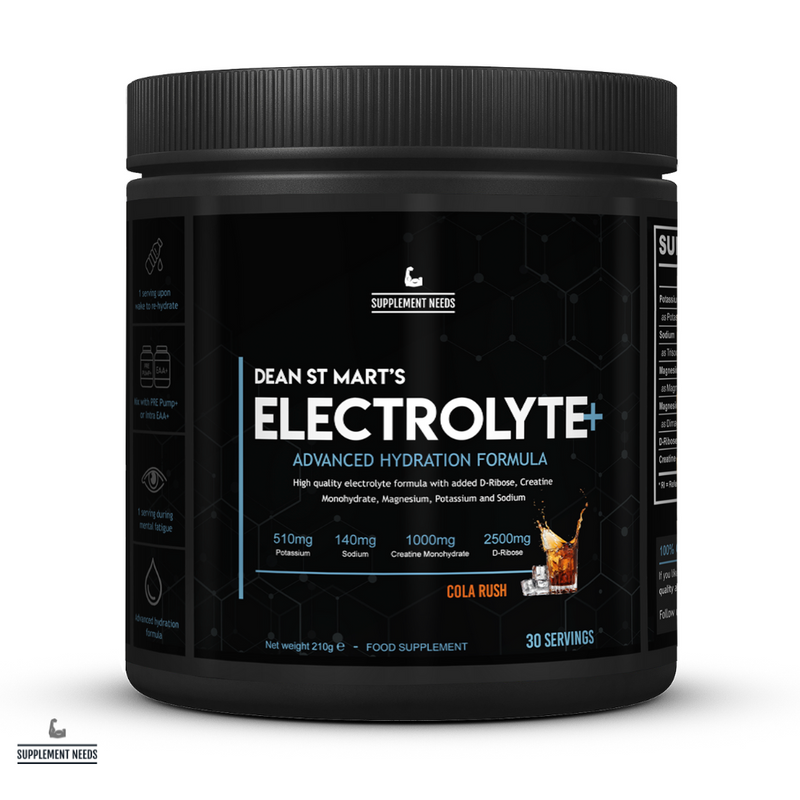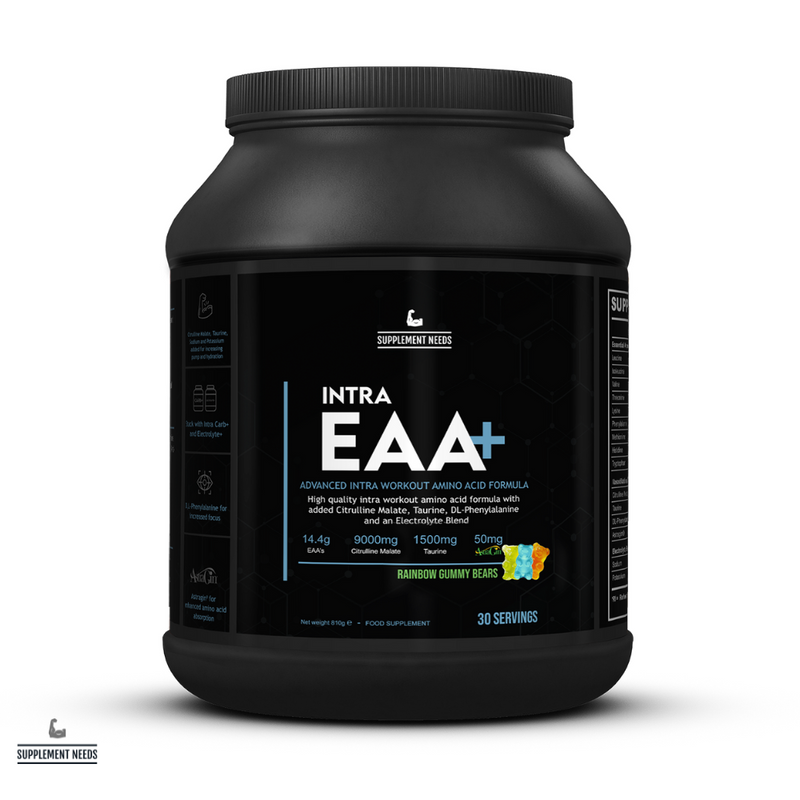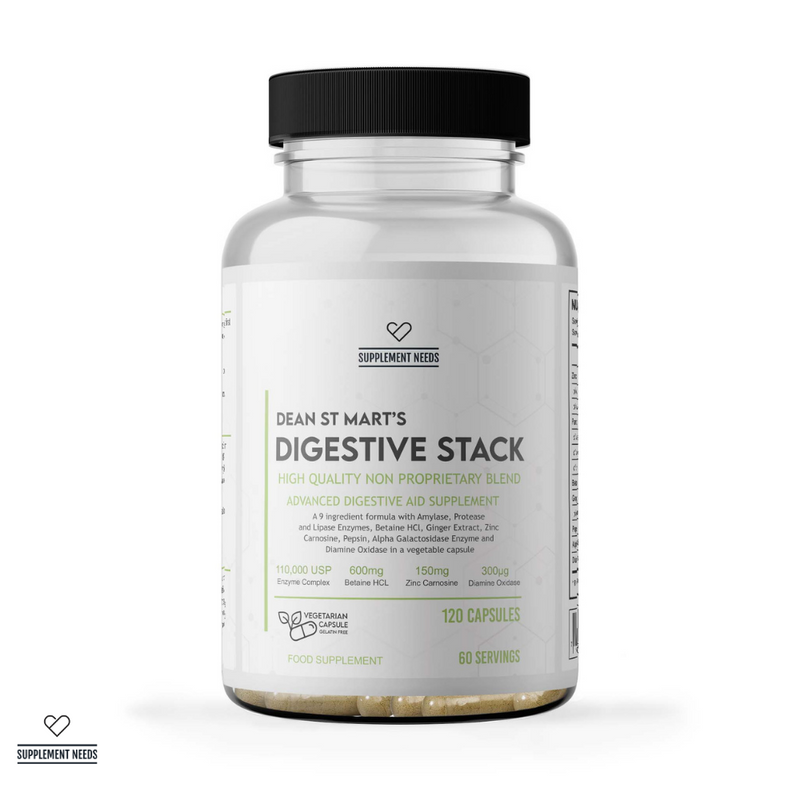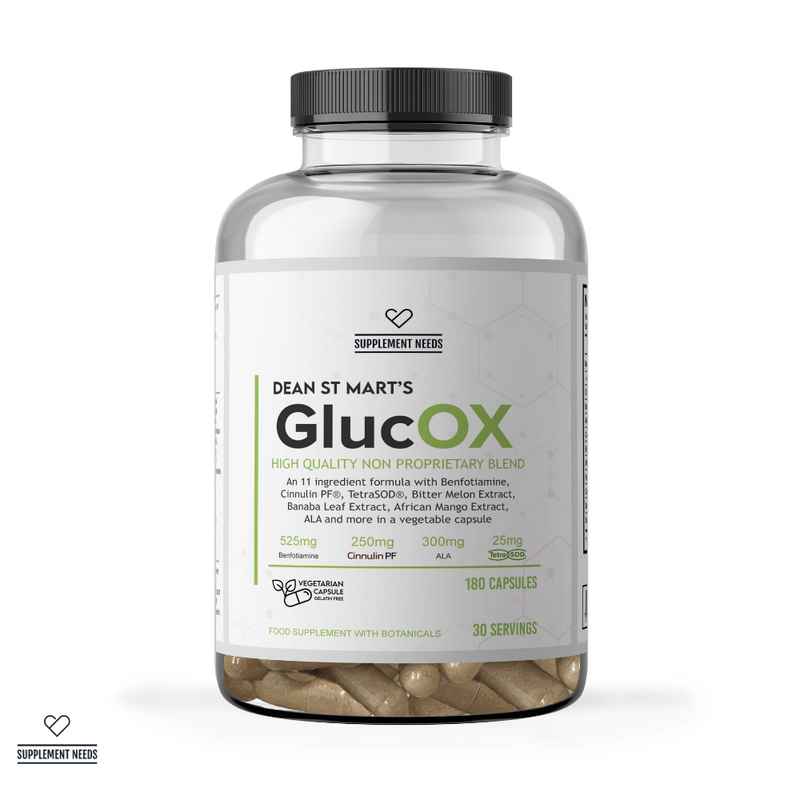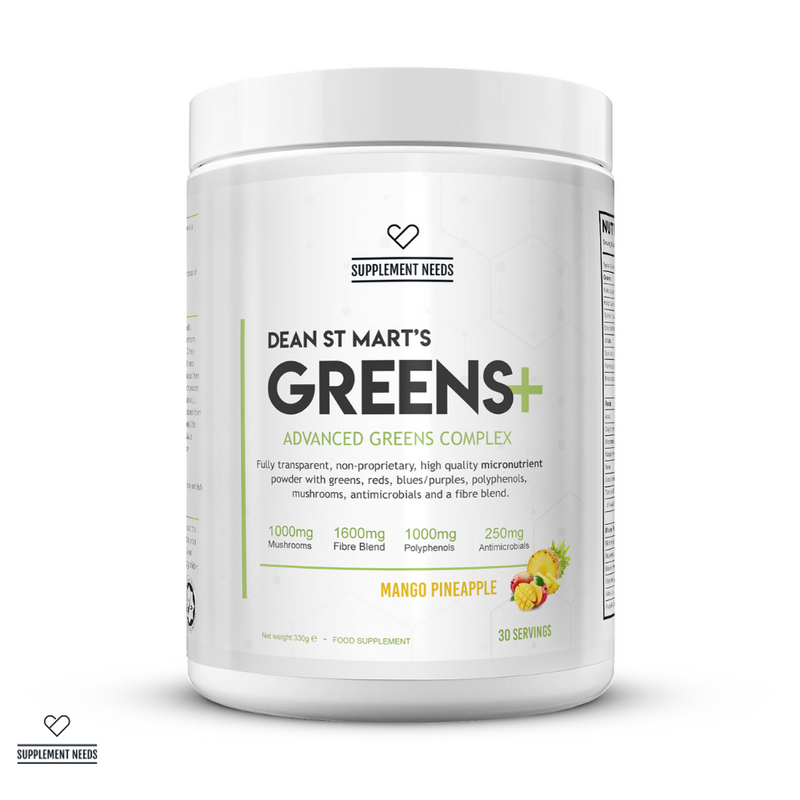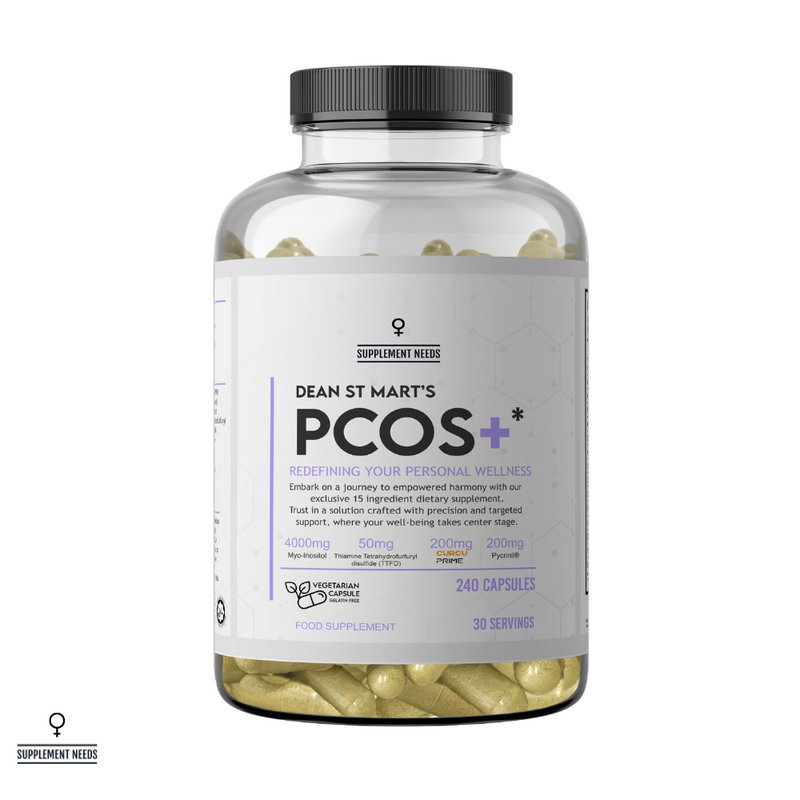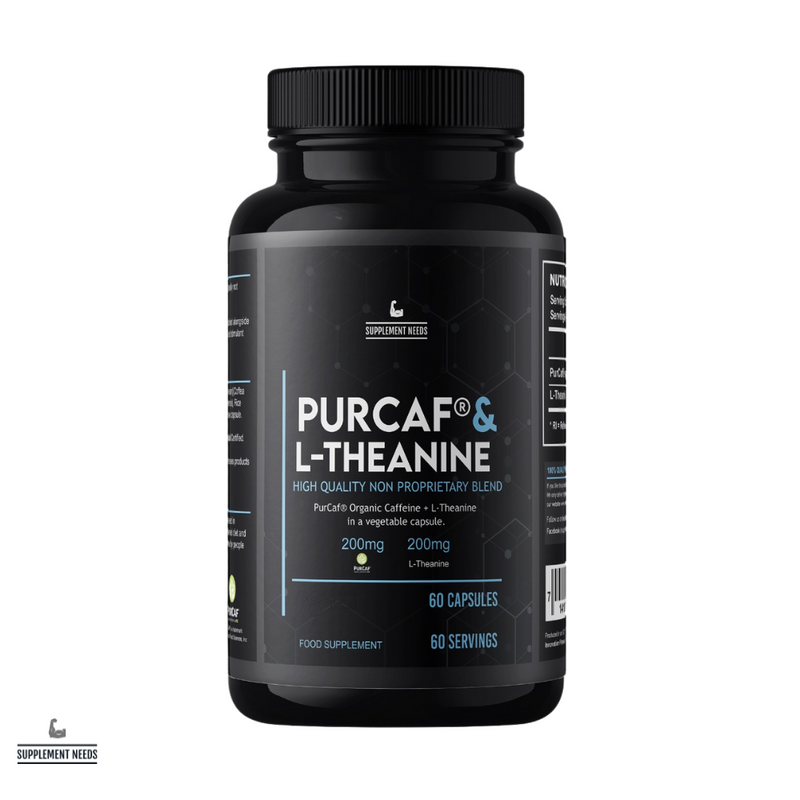The liver is the largest organ in the human body, and is responsible for numerous critically important functions. So, what can you do to potentially support your liver health? One route is the supplementation of TUDCA. But, what exactly is TUDCA? And, what does it do? The Supplement Needs team takes a look…
What is TUDCA?
Let’s begin with a definition. What exactly is TUDCA? As you’ve probably guessed, TUDCA is an initialism that stands for tauroursodeoxycholic acid - a naturally occurring hydrophilic bile acid.
TUDCA is formed by combining taurine - a type of sulphur-containing amino acid1 - and ursodeoxycholic acid (UDCA). Hence, when combined, these two substances form TUDCA2.
We appreciate that is quite a technical definition. Is there a simpler one? Yes; TUDCA can be defined as a ‘bile salt’.
Bile salts - such as TUDCA - are the primary constituents of bile. As we’ve written previously, bile is a type of ‘emulsifier’ that helps your body break down fats into fatty acids which can then be subsequently absorbed by your intestines.
To quote our previous article:
‘Bile is considered to be a ‘complex aqueous secretion’ that ‘consists of ~95% water in which are dissolved a number of endogenous solid constituents including bile salts, bilirubin phospholipid, cholesterol, amino acids, steroids, enzymes, porphyrins, vitamins, and heavy metals, as well as exogenous drugs, xenobiotics and environmental toxins’3.
And, here’s the key part - ‘Of these constituent parts, it’s the bile salts that are primarily responsible for breaking down fats’4.
Bile salts like TUDCA also play a key role in ensuring the absorption of fat-soluble vitamins5 - which as we’ve seen - play myriad roles in supporting your body’s core metabolic functions.
How is TUDCA produced in the body?
It’s important to note that TUDCA does occur naturally within the body. As we saw earlier TUDCA is formed of ursodeoxycholic acid (UDCA) which is conjugated to taurine.
But, where do ursodeoxycholic acid and taurine come from? Or to use slightly more technical language, how are they endogenously synthesised?
Let’s begin with the T in TUDCA - taurine.
Taurine is biologically synthesised within the pancreas via what’s known as the cysteine sulfinic pathway. It is also produced in the body via the transsulfuration pathway. Both of these pathways result in hypotaurine - this is then oxidised into taurine.
So, what about ursodeoxycholic acid? How is that synthesised? The answer is that it is synthesised in the gut by intestinal bacteria. As one study describes the mechanism of action, ‘It is formed by 7b-epimerization of primary bile acid chenodeoxycholic acid’6.
Once both taurine and ursodeoxycholic acid have been synthesised, the ursodeoxycholic acid is conjugated with the taurine to form TUDCA. To put this another way, once ursodeoxycholic acid is created in the intestine it will ‘bind’ to taurine molecules in order to form TUDCA7.
Note - it is also possible to produce ursodeoxycholic acid 'artificially’. This is done using cholic acid. This cholic acid is sourced from bovine bile and follows a seven-step process to produce ursodeoxycholic acid8.
What does TUDCA do?
Okay, so we now know how TUDCA is created, and we know that it’s one of the primary constituents of bile. But, what exactly does it do?
The key to answering this question really lies in answering another - what does bile do?
Assists in the elimination of toxins, supporting liver health
It’s widely recognised that the liver is the body’s ‘de-toxin’ engine - helping the body deal with both exogenous and endogenous toxins e.g. certain metabolic wastes and externally-sourced toxins such as alcohol and certain drugs.
The liver is able to do this via a number of detoxification pathways which involve ‘converting lipophiles into more water-soluble metabolites which can be efficiently eliminated from the body via the urine’9.
In fact, the liver is so important in terms of detoxification that it plays a central role in all metabolic processes in the body10.
But if the liver does all this ‘detoxing’, what detoxes the liver itself?!
The answer lies partially in bile.
The main way in which bile helps the liver is in transporting bilirubin - a by-product of red blood cell breakdown away from the liver to the intestines, where the bilirubin will eventually be removed by your body within the faeces11.
In other words, healthy bile production ensures that there is sufficient bile to ‘flow’ toxins away from the liver onward via the biliary system into the gut and out of your body.
However, if the liver is ‘overwhelmed’ by toxins e.g. by sustained alcohol or anabolic steroid abuse over the course of many years, then its ability to produce bile can be severely impaired in a number of ways12:
- Decreased bile production.
- The composition of produced bile can change, becoming less effective at emulsifying and digesting fats.
- Damage to the bile ducts, limiting the flow of bile into the intestines. This can effectively result in bilirubin ‘backing up’ and not being properly eliminated from the body. It’s why many end-stage alcoholics turn ‘yellow’. This is as a result of bilirubin building up in the body.
- Inability to properly clear toxins.
It’s for these reasons that TUDCA has been used for several decades to help reduce liver fibrosis and damage13.
There is a fairly hefty evidence base backing up the connection between TUDCA and improved hepatic health. Take one large scale study, for example. One hundred and fifty-five patients suffering from chronic hepatitis (inflammation of the liver) were randomly assigned to receive TUDCA at the daily doses of 250, 500 and 1000 mg, or no treatment for six months.
The results of the study were positive, with decreases in those liver enzymes that are suggestive of a negative change in liver function. To quote the study’s findings verbatim:
‘Aminotransferase and gamma-glutamyl transpeptidase (GGT) serum levels decreased with each dose of TUDCA compared with controls (P<0.001). The 1000 mg dose was followed by more marked improvement compared with 250 mg (P<0.05). A progressive improvement of alanine aminotransferase (ALT) with time (P<0.05) was found only with the two higher doses. TUDCA improves the biochemical expression of chronic hepatitis and daily doses of at least 500 mg are recommended’14.
TUDCA supplementation may also potentially be beneficial in severe cases of liver damage such as cirrhosis15.
Aside from potentially helping the liver to combat damage, some limited studies suggest that TUDCA may also proactively protect against liver damage in the first place. One study conducted on rats found that TUDCA supplementation may potentially protect the liver against long-term, alcohol-induced hepatic damage16. Researchers posit that this protective effect may be due to TUDCA maintaining the flexibility of the outer membranes of mitochondria.
Supports metabolic health
Whilst TUDCA is best known for its potential benefits for liver health - it has also been positively linked to other bodily functions.
Take metabolic health, for example.
Scientists believe (although this is still very much a hypothesis in early development) that TUDCA potentially increases energy burn at the cellular level. This in turn, may influence how the body regulates insulin.
It is also believed that TUDCA may potentially reduce endoplasmic reticulum (ER) stress17. As ER stress can lead to cellular dysfunction and death, it’s not surprising to see that ER stress is linked to impaired insulin regulation and thus the development of metabolic diseases.
Whilst this is a nascent hypothesis, there are some studies which suggest it could be correct. One study on lab animals saw researchers induce an artificially high level of blood sugar in the test subjects. When treated with TUDCA, the test subjects exhibited a 43% drop in blood serum glucose levels18.
That’s a technical way of saying that TUDCA may potentially contribute to maintaining your metabolic health - combating the development of metabolic diseases such as diabetes mellitus.
May support gut health
Given that UDCA is synthesised within the gut and then conjugated with taurine there to form TUDCA, it’s perhaps not surprising to learn that TUDCA may potentially have a beneficial impact upon gut health.
But, what exactly about gut health can TUDCA potentially support?
Studies seem to indicate that TUDCA may help protect against ‘leaky gut’ syndrome - a condition where the barrier between the gut and the bloodstream partially breaks down - allowing bacteria and toxins into the bloodstream.
One animal study found that TUDCA may - in its role as a chemical chaperone - help the protein messengers that signal the gut’s tight junctions to open or close - perform better19. To put this another way, by supporting messenger proteins, TUDCA may help maintain tight junction integrity, preventing bacteria and other unwanted elements from passing into the bloodstream.
Another potential way in which TUDCA may support gut health is in supporting gut microbiota via an increased influx of primary bile acids into the gut. Whilst evidence is light in this area, there have been some relatively positive studies20 in recent years.
Guide - find out more about gut health with our guide, What Is the Microbiome? The Importance of Gut Health.
May support cellular health
At the root of many diseases is mitochondrial dysfunction - the ‘powerhouses’ that sit at the heart of cells.
However, as you’ll probably be aware, cells (and in turn their mitochondria) can be damaged by the action of free radicals, resulting in oxidative stress - and even cellular destruction.
But, as studies are increasingly pointing out, TUDCA may help prevent this oxidative stress by acting as an antioxidant. As one particularly prominent study21 found, TUDCA can not only modulate mitochondrial turnover, but also prevent MPP⁺-induced mitochondrial dysfunction and cell death (MPP⁺ (1-methyl-4-phenylpyridinium) being a neurotoxin free radical generator).
Potential immune support
A little studied - but potentially beneficial impact of TUDCA - is its role in possibly defending against pathogens and modulating immune response.
One study22 - which focused upon the potential therapeutic use of TUDCA against the influenza virus - found that tauroursodeoxycholic acid, in its role as an ER stress inhibitor, inhibited influenza by disrupting the viral proton channel M2.
TUDCA has also been linked to the suppression of the herpes simplex virus (HSV-1) in a limited set of studies23.
May support kidney health
Beyond its traditional association with the liver, scientists increasingly believe that TUDCA may have a beneficial effect on the kidneys.
In particular, studies suggest that TUDCA may protect the kidneys from sodium-induced damage (predominantly renal injury and inflammation).
When you consider that on average, UK working-age adults consume 40 percent more sodium per day than the national guideline24, you quickly see why TUDCA supplementation is attractive to many health-conscious individuals.
You may be wondering though “how does TUDCA combat sodium-induced kidney damage and inflammation?” The answer lies in TUDCA's antioxidant qualities that prevent apoptosis25 (that’s the technical term for cell death).
As one study26 characterised TUDCA’s effect upon the kidneys: ‘TUDCA protects against the development of glomerular and proximal tubular damage, decreases renal cell death, and inflammation in the renal cortex… These results highlight the potential use of TUDCA as a preventative tool against chronic high salt induced renal damage’.
May support eye health
This is a perhaps unexpected potential benefit of TUDCA, but several studies have posited a link between TUDCA and protection against macular degeneration.
Like many of the other potential benefits here - the beneficial aspect of TUDCA appears to be in its role of reducing apoptosis and providing protection against cellular damage. One study27 states that, ‘The hydrophilic bile acids UDCA and TUDCA are cytoprotective in many disease models’.
Limited studies28 have also suggested that TUDCA ‘may be used as a novel therapeutic agent for preventing vision loss in diseases that are characterised by photoreceptor detachment’.
Stimulates bile flow
Arguably one of the most important characteristics of TUDCA is its potential to stimulate and even possibly increase bile flow.
As we have seen, bile flow is important not just for the biliary system, but the body as a whole. Optimal bile flow assists with many important functions, including:
- Digestion.
- Toxin removal.
- Absorption of important nutrients.
Which is why it’s positive to see studies suggesting that TUDCA can potentially make a big contribution to supporting healthy bile flow. In one animal study29, the supplementation of TUDCA intravenously ‘stimulated bile flow by ~250%’ whilst dietary UDCA increased bile flow by ‘~500%, compared with untreated animals’.
Want to experience the ultimate TUDCA supplement?
As you’ve read, TUDCA has a wealth of potential benefits. At its core, TUDCA is a powerful cellular protective agent, and is critical to many bodily functions and organ health.
If you want to supplement your diet with a premium source of TUDCA, then look no further than Supplement Needs TUDCA & NAC. This is a fully transparent, non-proprietary supplement that has been researched, designed and formulated by the esteemed Dr. Dean St Mart PhD - a leading name in the supplements industry.
A note on N-Acetyl-Cysteine
You’ll spot that our TUDCA supplement has been formulated to include NAC (a.k.a. N-Acetyl-Cysteine). Why? Because, NAC has a number of potential benefits that complement TUDCA.
Perhaps one of the most important roles of NAC within the body is its contribution to the production of glutathione - the body’s master antioxidant. Further, NAC itself is an antioxidant with powerful protective properties30. As we saw earlier, antioxidants are integral to protecting the body from oxidative stress and inflammation - which, over time, can result in the development of chronic diseases.
Aside from its overarching role as an antioxidant, NAC can also assist with the detoxification of the liver - hence its complementary role with TUDCA. In particular, studies31 have suggested that NAC may play a role in the chelation of heavy metals, assisting the body in the removal of environmental toxins.
NAC is also regularly applied in a therapeutic sense to treat a variety of liver disorders32 e.g. supporting liver function in patients with non-alcoholic fatty liver disease33.
It’s for these reasons and more that the very best TUDCA supplements also include NAC.
Don’t forget your Liver Stack!

Whilst this article has focused predominantly on TUDCA (and by association our Supplement Needs TUDCA & NAC), we also want to bring to your attention our hugely popular Liver Stack.
Supplement Needs Liver Stack has been developed and formulated to be the ultimate liver multivitamin.
Formulated by Dr Dean St. Mart PhD, Supplement Needs Liver Stack contains a carefully crafted blend of six ingredients - all of which may potentially support liver health.
At the core of Liver Stack is - as you’d expect - TUDCA (at 800 mg per eight capsule serving).
However, the other ingredients within Liver Stack have been linked by studies to supporting hepatic health:
-
Calcium D-Glucarate (at 1,000 mg per eight capsule serving). Calcium D-Glucarate has been shown in studies to support the glucuronidation pathway of detoxification. As one particular study34 stated, it ‘improves liver detoxification by downregulating hepatocyte apoptosis’.
-
Ox Bile Powder Extract (at 1,000 mg per eight capsule serving). Ox Bile (and other animal bile extracts) have long been used in traditional Chinese medicine as a therapeutic for a variety of conditions. As one study35 stated, ‘the minor components of bile such as Vitamins A, D, E, K as well as melatonin are salutary in improving liver function’.
-
L-Choline Bitartrate (at 800 mg per eight capsule serving). Choline is an important dietary methyl donor which supports liver function36. In particular, a deficiency of Choline can cause the liver to become fatty. Hence, its inclusion in Liver Stack!
-
Inositol (at 800 mg per eight capsule serving). Also known as Vitamin B8, Inositol is a type of sugar that supports numerous bodily processes. However, in this instance we are interested in the point that Inositol has been shown in studies37 to help guard against non-alcoholic fatty liver disease.
- Diindolylmethane (DIM) (at 800 mg per eight capsule serving). DIM has been demonstrated in several studies to have protective effects for the liver. In animal studies38, DIM was even shown to have beneficial effects in the case of acute liver failure (ALF).
As you can see, if you’re looking for a complete and comprehensive liver supplement, Liver Stack is the way to go!
Buy Supplement Needs TUDCA & NAC now

If you want to ensure you’re adding only the very best premium TUDCA supplement to your diet, it has to be Supplement Needs TUDCA & NAC.
Why? Well, let’s take a look:
-
The highest quality. Supplement Needs TUDCA & NAC contains an impressive 750 mg of TUDCA and 900 mg of NAC per three capsule serving. This represents incredible value for money - especially when compared to some of the other TUDCA supps you’ll see on the market. ✅
-
Complete transparency. Unlike many supplement brands, Supplement Needs is completely transparent about the ingredients and dosage of our TUDCA supplement. With Supplement Needs TUDCA & NAC you’ll know exactly what you’re putting in your body. ✅
-
An incredible dosage. As you may have surmised, given its fantastic properties, TUDCA is exceptionally expensive. For that reason, you’ll find that most TUDCA supplements use only a ‘sprinkling’ of TUDCA within their formulas (between 200-400 mg being the norm). However, at Supplement Needs we cut no corners and have created a TUDCA supplement without compromise. Supplement Needs TUDCA & NAC contains an incredible 750 mg (per three capsule serving). ✅
-
Developed by the best. Supplement Needs TUDCA & NAC has been researched, designed and formulated by industry-leader Dr. Dean St Mart PhD. With a double first class honours degree in chemistry and pharmaceutical chemistry and a PhD in synthetic organic chemistry and fluorescence spectroscopy - you’ll benefit from Dr Dean’s formidable knowledge of supplements when you buy Supplement Needs TUDCA & NAC. ✅
- Safe and quality manufacture. Do you really know where your supplements have come from? Do you know how they’re made? You do with Supplement Needs. All our supplements are manufactured here in the UK to Good Manufacturing Practices (GMP) and ISO guidelines. ✅
Find out more about Supplement Needs’ philosophy and guiding principles.
With all that in mind, if you’re ready to add a TUDCA supplement to your diet, do so with Supplement Needs today. Not only are our supplements of premium quality and exceptionally well researched, but we offer free shipping on all orders over £40 and same day despatch Monday to Friday (before 8pm), and Saturday to Sunday (before 3pm).
What are you waiting for?
Shop Supplement Needs TUDCA & NAC now
Disclaimer
The information on this website should not be used as a substitute for professional medical care or advice. If you have questions about your health, please contact your doctor.
References
1. Jong C, Sandal P, Schaffer S. The Role of Taurine in Mitochondria Health: More Than Just an Antioxidant [online]. Available at: https://www.ncbi.nlm.nih.gov/pmc/articles/PMC8400259/ (Accessed on 6th September 2024).
2. Kusaczuk M. Tauroursodeoxycholate - Bile Acid with Chaperoning Activity: Molecular and Cellular Effects and Therapeutic Perspectives [online]. Available at: https://www.ncbi.nlm.nih.gov/pmc/articles/PMC6952947/ (Accessed on 6th September 2024).
3. Boye J. Bile Formation and Secretion [online]. Available at: https://www.ncbi.nlm.nih.gov/pmc/articles/PMC4091928/ (Accessed on 6th September 2024).
4. Wenniger L, Pusl T, Beuers U. Bile Salts: Encyclopedia of Biological Chemistry. University of Amsterdam, Amsterdam, The Netherlands.
5. Hundt M, Basit H, John S. Physiology, Bile Secretion [online]. Available at: https://www.ncbi.nlm.nih.gov/books/NBK470209/# (Accessed on 6th September 2024).
6. Kotb M. Molecular Mechanisms of Ursodeoxycholic Acid Toxicity & Side Effects: Ursodeoxycholic Acid Freezes Regeneration & Induces Hibernation Mode [online]. Available at: https://www.ncbi.nlm.nih.gov/pmc/articles/PMC3430272/# (Accessed on 6th September 2024).
7. Patel K. TUDCA [online]. Available at: https://examine.com/supplements/tudca/?srsltid=AfmBOorcVS1tVrZtwtiUC9VmRG03leyo0AfRB6tsiXyKwirGRCTHGKfQ (Accessed on 6th September 2024).
8. Song P, Zhang X, Feng W, et. al. Biological synthesis of ursodeoxycholic acid [online]. Available at: https://www.ncbi.nlm.nih.gov/pmc/articles/PMC9998936/ (Accessed on 6th September 2024).
9. Grant D. Detoxification pathways in the liver [online]. Available at: https://pubmed.ncbi.nlm.nih.gov/1749210/ (Accessed on 6th September 2024).
10. National Library of Medicine: National Centre for Biotechnology Information. In brief: How does the liver work? [online]. Available at: https://www.ncbi.nlm.nih.gov/books/NBK279393/ (Accessed on 6th September 2024).
11. Hundt M, Basit H, John S. Physiology, Bile Secretion [online]. Available at: https://www.ncbi.nlm.nih.gov/books/NBK470209/# (Accessed on 6th September 2024).
12. Osna N, Donohue T, Kharbanda K. Alcoholic Liver Disease: Pathogenesis and Current Management [online]. Available at: https://www.ncbi.nlm.nih.gov/pmc/articles/PMC5513682/ (Accessed on 6th September 2024).
13. Pan X, Zhao L, Li L, et. al. Efficacy and safety of tauroursodeoxycholic acid in the treatment of liver cirrhosis: a double-blind randomised controlled trial [online]. Available at: https://pubmed.ncbi.nlm.nih.gov/23592128/ (Accessed on 6th September 2024).
14. Crosignani A, Battezzati P, Cestari C, et. al. Tauroursodeoxycholic acid for the treatment of chronic hepatitis: a multicentre dose-response study [online]. Available at: https://www.sciencedirect.com/science/article/abs/pii/S1386634698000709 (Accessed on 6th September 2024).
15. Pan X, Zhao L, Li L, et. al. Efficacy and safety of tauroursodeoxycholic acid in the treatment of liver cirrhosis: a double-blind randomised controlled trial [online]. Available at: https://pubmed.ncbi.nlm.nih.gov/23592128/ (Accessed on 6th September 2024).
16. Kusaczuk M. Tauroursodeoxycholate - Bile Acid with Chaperoning Activity: Molecular and Cellular Effects and Therapeutic Perspectives [online]. Available at: https://www.ncbi.nlm.nih.gov/pmc/articles/PMC6952947/#B66-cells-08-01471 (Accessed on 6th September 2024).
17. Özcan U, Yilmaz E, Özcan L, et. al. Chemical Chaperones Reduce ER Stress and Restore Glucose Homeostasis in a Mouse Model of Type 2 Diabetes [online]. Available at: https://www.ncbi.nlm.nih.gov/pmc/articles/PMC4741373/ (Accessed on 6th September 2024).
18. Bronczek G, Vettorazzi J, Soares G, et. al. The Bile Acid TUDCA Improves Beta-Cell Mass and Reduces Insulin Degradation in Mice With Early-Stage of Type-1 Diabetes [online]. Available at: https://www.ncbi.nlm.nih.gov/pmc/articles/PMC6529580/ (Accessed on 6th September 2024).
19. Song M, Zhang F, Fu Y, et. al. Tauroursodeoxycholic acid (TUDCA) improves intestinal barrier function associated with TGR5-MLCK pathway and the alteration of serum metabolites and gut bacteria in weaned piglets [online]. Available at: https://www.ncbi.nlm.nih.gov/pmc/articles/PMC9175448/ (Accessed on 6th September 2024).
20. Francini E, Orlandoni P, Sparvoli D, et. al. Possible Role of Tauroursodeoxycholic Acid (TUDCA) and Antibiotic Administration in Modulating Human Gut Microbiota in Home Enteral Nutrition Therapy for the Elderly: A Case Report [online]. Available at: https://www.ncbi.nlm.nih.gov/pmc/articles/PMC11240908/ (Accessed on 6th September 2024).
21. Rosa A, Fonseca I, Nunes M, et. al. Novel insights into the antioxidant role of tauroursodeoxycholic acid in experimental models of Parkinson’s disease [online]. Available at: https://www.sciencedirect.com/science/article/pii/S0925443917301990# (Accessed on 6th September 2024).
22. Li N, Zhang Y, Wu S, et. al. Tauroursodeoxycholic acid (TUDCA) inhibits influenza A viral infection by disrupting viral proton channel M2 [online]. Available at: https://www.sciencedirect.com/science/article/pii/S2095927318304134?via%3Dihub (Accessed on 6th September 2024).
23. Su A, Wang H, Zheng D, et. al. TUDCA inhibits HSV-1 replication by the modulating unfolded protein response pathway [online]. Available at: https://onlinelibrary.wiley.com/doi/abs/10.1002/jmv.25963 (Accessed on 6th September 2024).
24. British Heart Foundation. We’re all eating too much salt - here’s why that matters [online]. Available at: https://www.bhf.org.uk/what-we-do/news-from-the-bhf/news-archive/2022/march/why-matters-eat-too-much-salt# (Accessed on 6th September 2024).
25. National Cancer Institute. Apoptosis [online]. Available at: https://www.cancer.gov/publications/dictionaries/cancer-terms/def/apoptosis (Accessed on 6th September 2024).
26. Miguel C, Sedaka R, Kasztan M, et. al. Tauroursodeoxycholic acid (TUDCA) abolishes chronic high salt-induced renal injury and inflammation [online]. Available at: https://www.ncbi.nlm.nih.gov/pmc/articles/PMC6462246/ (Accessed on 6th September 2024).
27. Boatright J, Nickerson J, Moring A, et. al. Bile acids in treatment of ocular disease [online]. Available at: https://www.ncbi.nlm.nih.gov/pmc/articles/PMC2798994/ (Accessed on 6th September 2024).
28. Mantopoulos D, Murakimi Y, Commander J, et. al. Tauroursodeoxycholic Acid (TUDCA) Protects Photoreceptors from Cell Death after Experimental Retinal Detachment [online]. Available at: https://journals.plos.org/plosone/article?id=10.1371/journal.pone.0024245 (Accessed on 6th September 2024).
29. Bodewes F, Wouthuyzen-Bakker M, Bijvelds M, et. al. Ursodeoxycholate modulates bile flow and bile salt pool independently from the cystic fibrosis transmembrane regulator (Cftr) in mice [online]. Available at: https://journals.physiology.org/doi/full/10.1152/ajpgi.00258.2011 (Accessed on 6th September 2024).
30. Pedre B, Barayeu U, Exerina D, et. al. The mechanism of action of N-acetylcysteine (NAC): The emerging role of H₂S and sulfane sulfur species [online]. Available at: https://www.sciencedirect.com/science/article/pii/S0163725821001182 (Accessed on 9th September 2024).
31. Rossignol D. The Use of N-Acetylcysteine as a Chelator for Metal Toxicity [online]. Available at: https://link.springer.com/chapter/10.1007/978-981-10-5311-5_10? (Accessed on 9th September 2024).
32. Millea P. N-acetylcysteine: multiple clinical applications [online]. Available at: https://pubmed.ncbi.nlm.nih.gov/19621836/ (Accessed on 9th September 2024).
33. Khoshbaten M, Aliasgarzadeh A, Masnadi K, et. al. N-Acetylcysteine Improves Liver Function in Patients with Non-Alcoholic Fatty Liver Disease [online]. Available at: https://www.ncbi.nlm.nih.gov/pmc/articles/PMC3270338/ (Accessed on 9th September 2024).
34. Ayyadurai V, Deonikar P, Fields C. Mechanistic Understanding of D-Glucaric Acid to Support Liver Detoxification Essential to Muscle Health Using a Computational Systems Biology Approach [online]. Available at: https://www.ncbi.nlm.nih.gov/pmc/articles/PMC9921405/ (Accessed on 10th September 2024).
35. Wang D, Carey M. Therapeutic uses of animal biles in traditional Chinese medicine: An ethnopharmacological, biophysical chemical and medicinal review [online]. Available at: https://www.ncbi.nlm.nih.gov/pmc/articles/PMC4123376/# (Accessed on 10th September 2024).
36. Mehedint M, Zeisel S. Choline’s role in maintaining liver function: new evidence for epigenetic mechanisms [online]. Available at: https://www.ncbi.nlm.nih.gov/pmc/articles/PMC3729018/# (Accessed on 10th September 2024).
37. Pani A, Giossi R, Menichelli D, et. al. Inositol and Non-Alcoholic Fatty Liver Disease: A Systematic Review on Deficiencies and Supplementation [online]. Available at: https://www.ncbi.nlm.nih.gov/pmc/articles/PMC7694137/#: (Accessed on 10th September 2024).
38. Tomar S, Nagarkatti M, Nagarkatti P. 3,3’-Diindolylmethane attenuates LPS-mediated acute liver failure by regulating miRNAs to target IRAK4 and suppress Toll-like receptor signalling [online]. Available at: https://www.ncbi.nlm.nih.gov/pmc/articles/PMC4386987/ (Accessed on 10th September 2024).
